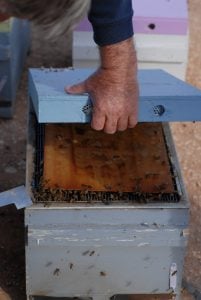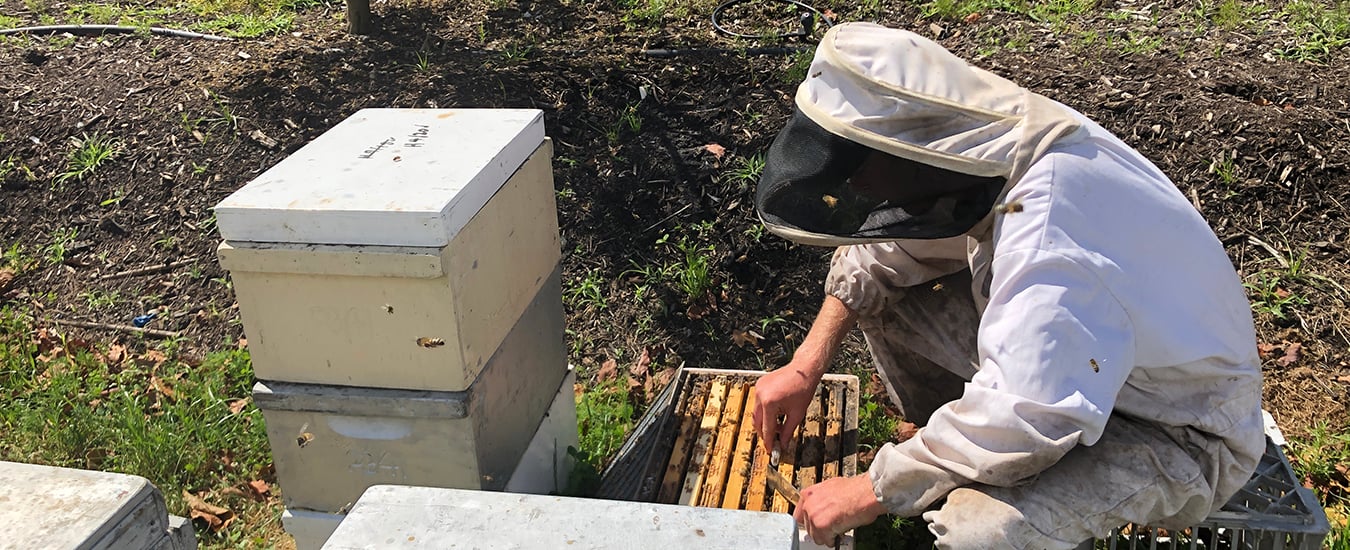Under the Australian honey bee industry biosecurity code of practice beekeepers are required to inspect their hives at least twice per year and to keep accurate records.
 Each hive must be inspected for hive strength and the presence of pests and diseases, inspecting at least three full-depth brood frames. If only two inspections are performed in a year they must be at least four months apart (for example in October and January). At least one hive in each apiary must also be checked for Braula fly (except in Tasmania) and exotic mites (Varroa, tracheal mite, Tropilaelaps) using either a sugar shake, alcohol wash or drone uncapping.
Each hive must be inspected for hive strength and the presence of pests and diseases, inspecting at least three full-depth brood frames. If only two inspections are performed in a year they must be at least four months apart (for example in October and January). At least one hive in each apiary must also be checked for Braula fly (except in Tasmania) and exotic mites (Varroa, tracheal mite, Tropilaelaps) using either a sugar shake, alcohol wash or drone uncapping.
Record keeping
Record keeping is essential to good beekeeping and biosecurity. Such records will make it possible to trace disease outbreaks, this will be extremely important if Varroa establishes in Australia. The minimum requirements are:
- The date of the inspection
- The strength of the colony and any pests or diseases found
- Details of hive movements: dates, hive numbers, geographic locations
- Details of any introductions of bees or used hives or hive components from external sources
- Details of any tests for American foulbrood (where AFB is suspected (all beekeepers), or as required for beekeepers with more than 50 hives)
- Details of training (including required training for beekeepers with more than 50 hives)
Records can be made on paper or electronically, and must be kept for three years. There are a number of templates available at www.beeaware.org.au or on state department websites. There are a number of phone apps available for keeping hive records.
What recording method do you use?
 Let us know the recording method you use! Take the 30 second poll now!
Let us know the recording method you use! Take the 30 second poll now!
Videos
Doug Somerville demonstrates how to inspect a hive for disease
Mark Page, NSW DPI Bee Biosecurity Officer demonstrates colony inspections
Acknowledgements:
- This article was written by Nadine Chapman and peer-reviewed by Karla Williams and Elizabeth Frost.


